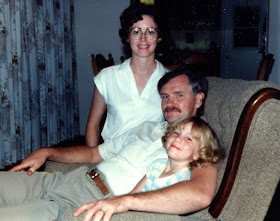The prevailing, often unstated but just-under-the-surface assumption is that every trait in life is here because of natural selection. Of course, for a trait to be here at all, bearers of its ancestral states up to the present (or, at least, the recent past) were successful enough to have reproduced. It would not be here if it were otherwise, unless, for example, it's itself harmful, or without function but connected to a much better, related trait since genes are usually used in many different bodily contexts and may be associated with both beneficial and harmful traits. Most sensible evolutionary geneticists know that many or even most sites in genomes tolerate variation that has either no effect or effects so small that in realistic population sizes they change in frequency essentially by chance.
However, the widespread default assumption that there must be an adaptive explanation for every trait usually also tacitly assumes that probabilism doesn't make much difference. Some alert evolutionary biologists will acknowledge that one version among contemporary but equivalent versions of a trait can evolve by chance relative to other versions. But the insistence, tacit or expressed, is that natural selection, treated essentially as a force, is responsible. The very typical view is that the trait arose because of selection 'for' it, and that's why it's here. And speaking of 'here', here's where a pachinko analogy may be informative.
If a bevy of metal balls tumbles through the machine, each bouncing off the many pins, they will end up scattered across the bottom ledge of the machine (the gambling idea is to have them end up in a particular place, but that's not our point here). So let's take a given ball and ask 'Why did it end up where it did?"
The obvious and clearly true answer is 'Gravity is responsible'. That is the analogue of 'selection is responsible'. But it is rather an empty answer. One can always say that what's here must be here because it was favored (that is, not excluded) by fitness considerations: its ancestral bearers obviously reproduced! We can define that as 'adaptation' and indeed in a sense that is what is done every day, almost thoughtlessly.
Gravity is, like the typical if tacit assumption about natural selection, a deterministic force for all practical purposes here. But why did this ball end up in this particular place? One obvious answer is that each starts out in a slightly different place at the top, and no two balls are absolutely identical. However, each ball makes a different path from the top to the bottom of the obstacle course it faces. Yes, it is gravity that determines that they go down (adapt), but not how they go down.
In fact, each ball takes a different path, zigging and zagging at each point based on what happens, essentially by chance, at that point. This one might think of as local ecosystems on the evolutionary path of any organism, that are beyond its control. So, in the end, even if the entire journey is deterministic, in the sense that every collision is, the result is not one that can, in practice, be understood except by following the path of each ball (each trait, in the biological analogy). And this means that the trajectory cannot be predicted ahead of time. And in turn, this means that our interpretation of what a trait we see today was selected 'for' is often if not usually either basically just a guess or, more often, equates what the trait does today to what it was selected to be, expressed as if it were an express train from then to now.
And this doesn't consider another aspect of the chaotic and chance-affected nature of evolutionary adaptation: the interaction with the other balls bouncing around at the same time in such an obstacle course. Collisions are in every meaningful sense in the game of life, if not pachinko, chance events that affect selective ones, even were we to assume that selection is simple, straightforward, and deterministic.
The famous argument by Gould and Lewontin that things useful for one purpose, such as 'spandrels' in cathedral roofs, are incidental traits that provide the options for future adaptations--life exploits today with what yesterday produced for whatever reason even if just by chance. The analogy or metaphor has been questioned, but that is not important here. What is important is that contingencies of this nature are chance events, relative to what builds on them. Selectionism as a riposte to creationism is fine but hyper-selectionism becomes just another often thought-free dogma. Darwin gave us inspiration and insight, but we should think for ourselves, not in 19th century terms.
A far humbler, and far less 'Darwinian' (but not anti-Darwinian!), explanation of life is called for if we really want to understand evolution as a subtle often noisy process, rather than as a faith. Instead, even serious biologists freely invent--and that's an apt word for it--selective accounts, as if true explanations, for almost any trait one might mention. It's invented because some reason is imagined without any direct evidence other than present-day function, but then treated as if directly observed, which is rarely possible. Here is an interview that I just came across that in a different way makes some of the same points we are trying to make here.
Everything here today is 'adaptive' in the sense that it has worked up to now. Everything here today is also a 4 billion year successful lineage, that all made its way through the pachinko pins. But these are almost vacuous tautologies. Understanding life requires understanding one's biases in trying to force simple solutions on complicated reality.






